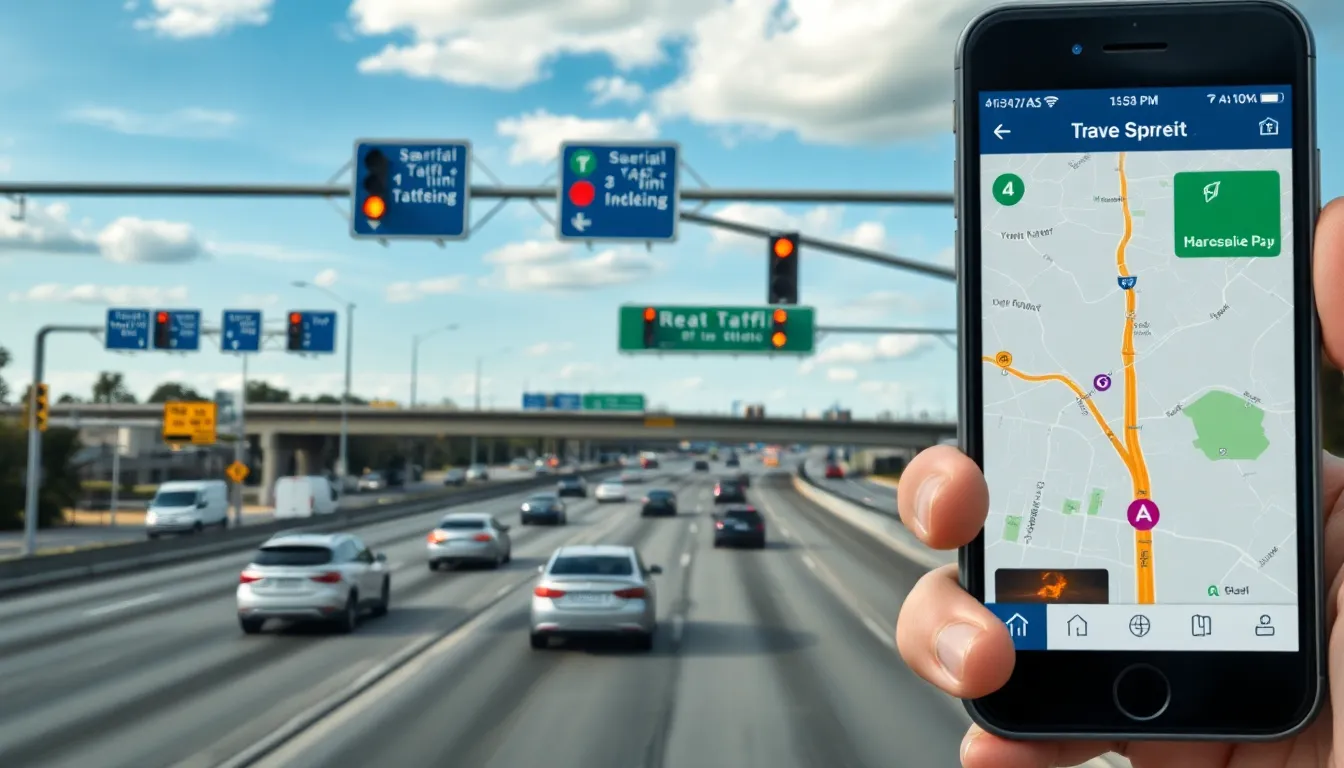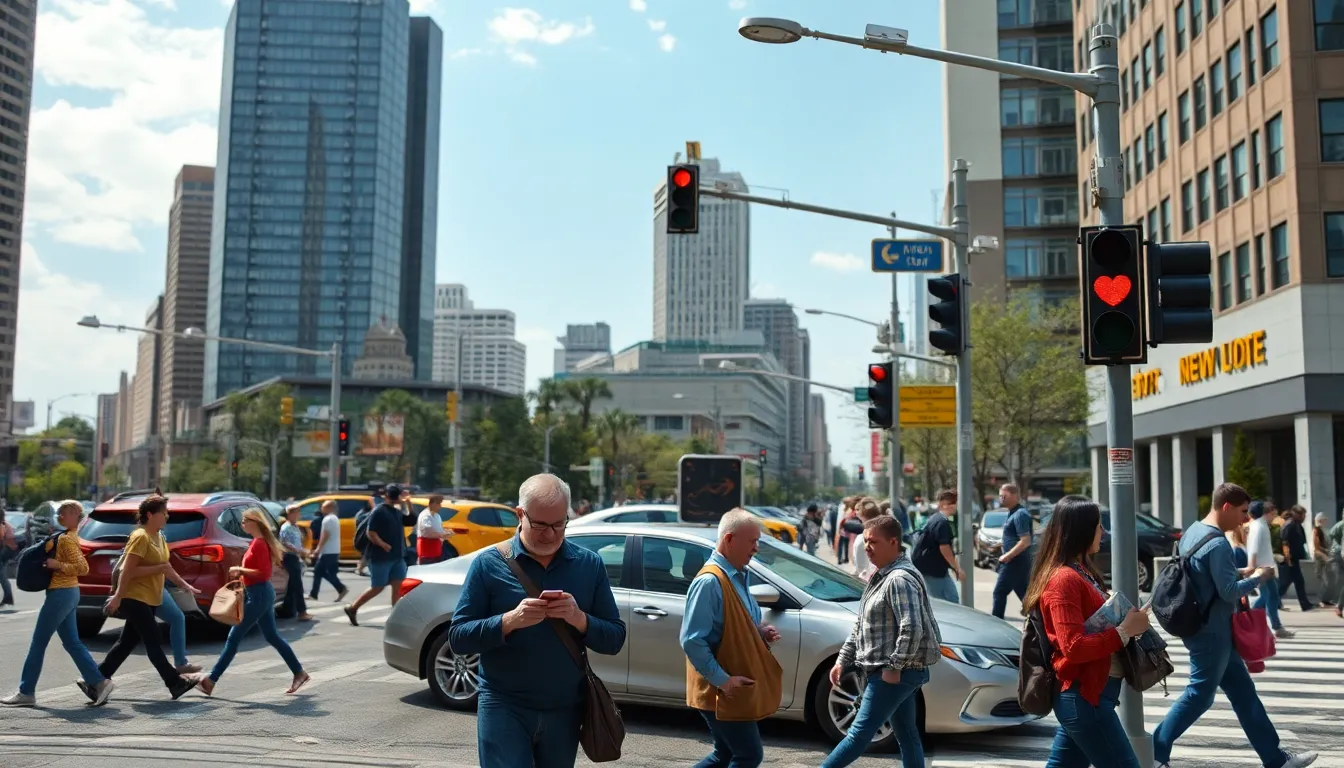Table of Contents
ToggleIn today’s fast-paced world, staying informed about traffic conditions is essential for efficient travel. Whether commuting to work or planning a road trip, real-time traffic updates can save time and reduce frustration. With the rise of smart technology and mobile apps, accessing this information has never been easier.
Traffic updates provide critical insights into road conditions, construction delays, and accidents, helping drivers make informed decisions. By leveraging these updates, travelers can choose alternative routes, avoid congestion, and arrive at their destinations on time. As urban areas continue to grow, understanding traffic patterns becomes increasingly important for everyone on the road.
Understanding Traffic Updates
Traffic updates provide essential insights into current road conditions, significantly influencing travel efficiency. Accessing accurate information in real-time allows drivers to navigate routes better, reducing delays.
Importance of Real-Time Information
Real-time information offers crucial benefits for commuters. It enables proactive decision-making by alerting drivers to accidents, construction zones, and traffic jams. For example, studies show that using real-time updates can shorten travel time by 20% to 30% during peak hours. Drivers aware of current conditions can select alternative routes, leading to reduced frustration and improved safety on the roads.
Technologies Behind Traffic Updates
Sophisticated technologies drive the effectiveness of traffic updates. Traffic monitoring systems employ sensors, cameras, and GPS data to collect information on vehicle speeds and congestion levels. Mobile apps integrate this data, providing users with live updates. Cloud computing facilitates rapid data processing and dissemination, while machine learning enhances predictive capabilities, allowing traffic systems to anticipate and respond to changing conditions dynamically.
Sources of Traffic Updates

Traffic updates derive from various sources, primarily government agencies and mobile applications. These sources provide real-time information that enhances travel efficiency and safety.
Government Agencies
Government agencies play a crucial role in delivering accurate traffic updates. Departments of transportation collect data through road sensors, traffic cameras, and aerial surveillance. They monitor road conditions, accidents, and construction activities, issuing alerts through various channels, including websites and social media platforms.
Many states offer real-time traffic maps accessible online or through specialized traffic apps. For instance, the U.S. Department of Transportation (USDOT) oversees national efforts to improve roadway safety and efficiency. Local municipalities often provide updates specific to their regions, ensuring drivers remain informed about conditions that may impact their routes.
Mobile Applications
Mobile applications provide a user-friendly interface for accessing traffic updates in real time. Popular applications like Waze, Google Maps, and Apple Maps integrate data from numerous sources, including government agencies and user-generated reports. These platforms deliver alerts about accidents, road closures, and construction zones, allowing drivers to adjust their travel plans quickly.
Mobile apps also employ GPS technology to offer personalized routing based on current traffic conditions, optimizing travel times. The crowd-sourced nature of applications allows for quicker updates as users report issues while on the road. By leveraging mobile applications, drivers achieve informed navigation decisions, ultimately reducing travel delays.
Analyzing Traffic Update Accuracy
Analyzing the accuracy of traffic updates involves examining data sources, challenges, and methods utilized for verification. Understanding these aspects ensures reliable information for better travel decisions.
Challenges in Data Collection
Data collection for traffic updates faces several challenges.
- Inconsistent Data Sources: Different agencies and apps utilize various methods to gather traffic information, leading to discrepancies.
- Real-Time Limitations: Data may not reflect real-time conditions due to temporal lags in reporting and updating.
- Geographical Variability: Urban and rural areas provide uneven data coverage, often resulting in gaps in information for less populated regions.
- Technological Barriers: Poor network connectivity or outdated technology in certain areas can hinder effective data collection and dissemination.
- User Reliability: Although user-generated contributions enhance data, they sometimes lack accuracy and can lead to misinformation.
Methods of Verification
Verification of traffic information utilizes several methods to ensure accuracy.
- Cross-Referencing: Agencies often cross-reference data from multiple sensors, cameras, and user reports to validate traffic conditions.
- Historical Analysis: Comparing real-time data against historical patterns helps identify anomalies and support data accuracy.
- Machine Learning Algorithms: Advanced algorithms analyze trends and make real-time predictions based on a variety of inputs, enhancing verification.
- User Feedback: Many applications rely on user feedback to corroborate reports, encouraging accuracy and timely updates.
- Official Partnerships: Collaboration between traffic agencies and tech companies facilitates shared data streams, improving overall reliability.
Future Trends in Traffic Updates
Traffic updates are evolving rapidly, driven by advancements in technology and the increasing demand for real-time information. The integration of smart city initiatives and the use of AI and machine learning promise to enhance traffic management and user experiences significantly.
Integration with Smart City Initiatives
Smart city initiatives focus on leveraging technology for improved urban living. Traffic updates increasingly integrate with these initiatives to create efficient transportation systems. Sensors, IoT devices, and connected infrastructure generate real-time traffic data, enabling city planners to optimize traffic flow. Cities like Barcelona and Singapore exemplify smart traffic management, using data analytics to reduce congestion and improve public transport reliability. Public transportation systems are also linked with traffic updates, allowing commuters to plan trips based on current conditions, further enhancing travel efficiency.
Use of AI and Machine Learning
AI and machine learning play crucial roles in the future of traffic updates. These technologies analyze vast datasets to identify patterns and make real-time predictions about traffic conditions. Advanced algorithms process information from multiple sources, including GPS data, traffic cameras, and historical trends. For instance, cities implement AI-driven traffic signal systems that adapt to current traffic volumes, minimizing wait times and reducing congestion. Machine learning models refine traffic predictions over time, improving the accuracy of updates. As AI continues to evolve, its application in traffic management will further increase the effectiveness of updates, aiding in more strategic travel planning.
Staying updated on traffic conditions is essential in today’s fast-paced environment. By leveraging real-time traffic updates through smart technology and mobile apps, drivers can navigate efficiently and avoid delays. This proactive approach not only enhances travel experiences but also contributes to overall time savings.
As urban areas continue to grow and evolve, understanding traffic patterns becomes increasingly important. The integration of advanced technologies and data analytics will further refine the accuracy of traffic updates, making it easier for commuters to make informed decisions. Embracing these tools will empower drivers to adapt to changing road conditions and optimize their travel routes effectively.




